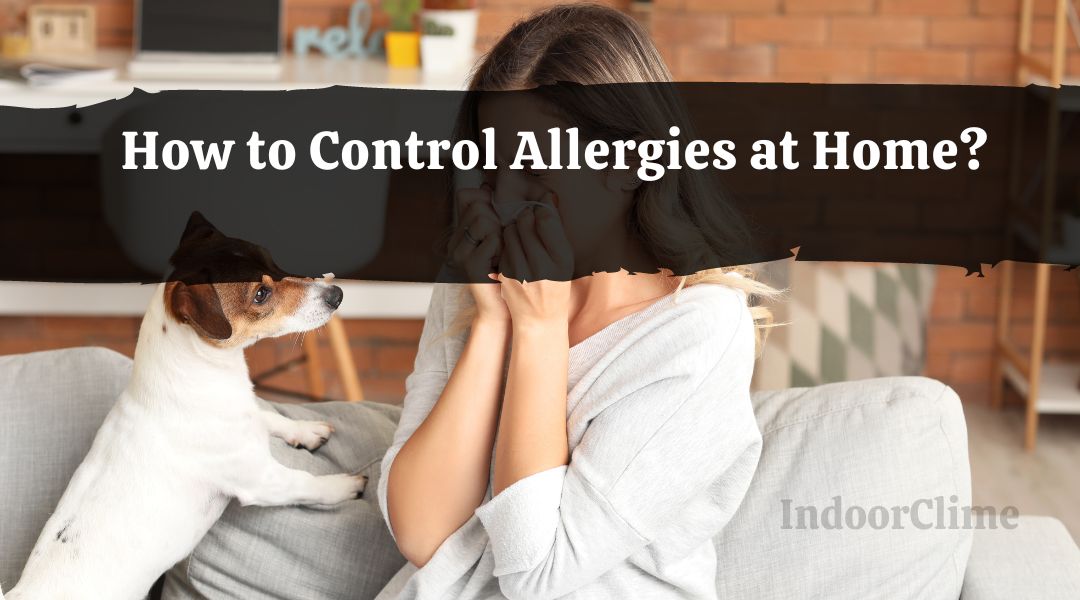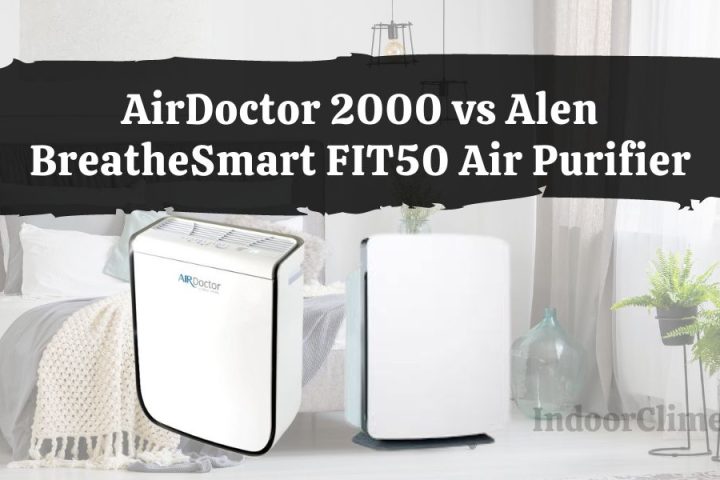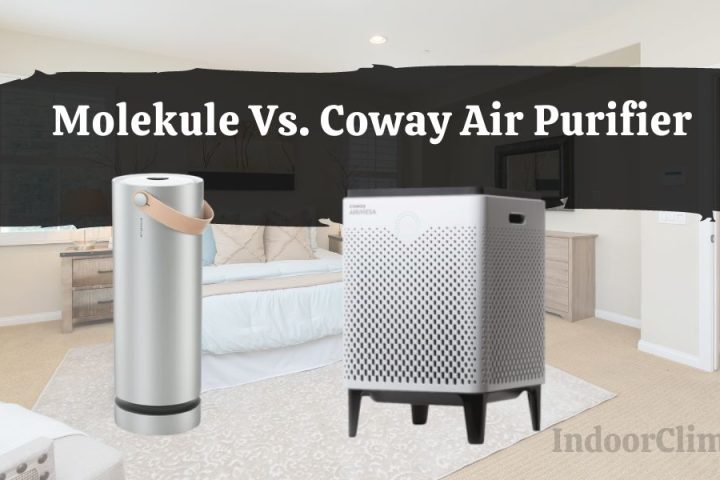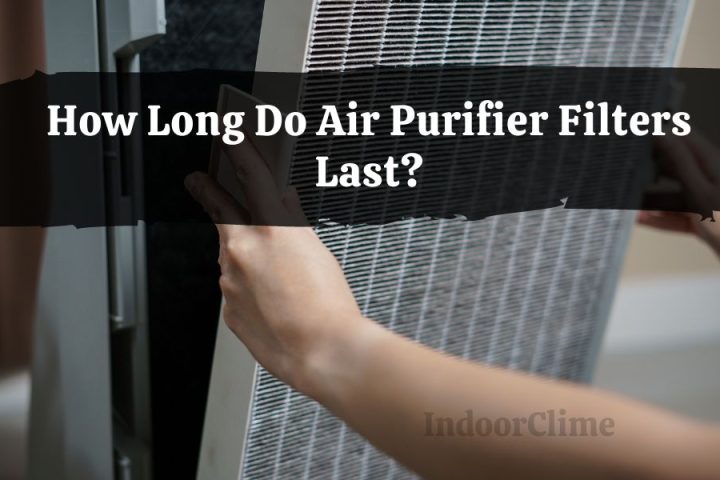Allergies are becoming increasingly common, especially as the number of pollutants in the air increases. Children, adults, and even indoor pets could suffer significantly from allergies.
These may not last all year but be specific to certain seasons, such as hay fever and allergic asthma during the spring.
While we do our best to avoid triggers when outside, our homes are also unsafe from particles that could cause allergies to flare up; indoor areas might even be more problematic for those suffering from allergies.
The particles have nowhere to go but spin around in a confined space. Unfortunately, this makes them much more likely to attack an allergy-prone person sooner rather than later.
What Are the Most Common Types Of Allergies?

People can be allergic to a wide variety of elements in the environment. The most common allergens are pollen, dust mites, animal dander, and mold.
Pollen is an airborne allergen (a fine yellow powder) picked up and moved by the wind, birds, insects, or other animals. Various trees, grasses, and weeds produce pollen, which is a year-round problem for many people and even more aggravating when it makes its way into their homes. Pollen is one of the several common allergens in the United States. 81% of people who suffer from allergies say they are allergic to pollen.
Dust Mites (bed mites) are cosmopolitan pyroglyphids living in human habitation. These microscopic arachnids are among the leading allergy offenders for people with allergic asthma. Invisible to the eye, dust mites are usually located in pillows, carpets, mattresses, and upholstered furniture since they live on dead skin and dander.
Dust: This allergen comprises many things in our homes, such as clothing fibers, dirt, bacteria, pet hair or dander, shed skin cells, and other material that accumulates daily. Dust is nearly impossible to eliminate.
Pet Dander: Dander is dead skin cells (and the oils in the skin cells) from animals. People seem to have more severe allergic reactions to cats. This is probably due to the enzyme from cats, which can also cause allergic reactions in humans. In addition, cats leave saliva-tainted hair and dander behind them, carrying a double allergen-trigger threat.
Molds are multiple fungi that grow in filaments and reproduce by creating spores. The mold grows in damp, warm, and humid conditions. Therefore, mold can be found in basically any environment or season.
Molds produce irritating substances that can act as allergy-causing elements (allergens) in sensitive persons. Some molds create toxic substances known as mycotoxins, but mold is not dangerous or toxic. The mold may not generate any health impacts or lead to symptoms in people sensitive to mold.
How to Control Allergies at Home?

Fortunately, there are many steps you can take to ensure that your allergies are controlled at home.
These steps are mainly geared toward reducing the allergens that enter your abode. However, to effectively allergy-proof your home, you may have to deal with the issue in detail.
1. Air Purifier
air purifiers to clear the air of allergens as much as possible” src=”https://indoorclime.com/wp-content/uploads/2022/05/Get-some-air-purifiers-to-clear-the-air-of-allergens-as-much-as-possible.jpg” alt=”Get some air purifiers to clear the air of allergens as much as possible” width=”1000″ height=”700″ />
The days when only chronically ill people used air purifiers in their homes are long gone, and now every modern house has an air purifier to prevent allergies and improve life quality. Pollutants and allergens in homes can cause real health damage, so air purifiers are essential machines in every home.
High-polluted cities like Skopje or Kanpur must use air purifiers to avoid toxic gases that can cause real health problems. Still, air purifiers can also help avoid allergens, even in low-polluted cities.
Get some air purifiers to clear the air of allergens as much as possible. A true HEPA or activated charcoal filter would be best here, as it absorbs the particles and doesn’t let them get out. Activated charcoal filters would also absorb odors and smells that could trigger your allergies without warning.
You can get a wall-mounted cleaner or a slim and sleek design to save space. If your allergies increase while sleeping, try positioning your bedroom purifier toward your head at night.
Let’s find out which air purifiers are the best for analyzing their advantages and disadvantages.
2. Bedding

Your pillows and mattresses should have covers resistant to dust mites, pet dander, and other allergens.
Even so, it would help to wash your loose bedding at least once a week to get any stray allergens out. The water for washing them should be at least 54°C or 130°F to kill harmful elements. Also, you should get hypoallergenic materials for bedding instead of wool covers or feather/down fillings.
People spend one-third of their lives sleeping. So, it’s important to invest in allergy-proof bedding. That can significantly decrease your allergy symptoms and warrant that you get a good night’s sleep.
Even allergy Doctors recommend covering all your bedding, pillows, mattress, box springs, comforters, and feather beds in allergy-proof bedding.
3. Floors
If you’re prone to allergies, your bedroom floors shouldn’t have carpeting. The same goes for all the other rooms. Go with area rugs instead, or switch to wooden/linoleum.
If carpeting is unavoidable, using a low-pile option and regular shampoos is best. It would help if you also considered investing in a vacuum with a true HEPA filter that could catch the smallest allergen particles and trap them inside.
4. Curtains or Blinds

Don’t go for blinds that could trap allergens like dust, pollen, or spores. These could be released into the air when dusted. Instead, invest in washable cotton or synthetic curtains.
Washable roller shades should preferably replace any horizontal binds.
5. Windows
If you have air conditioning, keep the windows shut during the hot pollen season. Any mold or condensation should be cleaned from the windows immediately.
If you’re experiencing a cold climate, invest in double-paned windows. These would hopefully prevent particles that cause viral infections from coming in.
6. Furniture

Your chairs should be easy to clean. The same goes for your tables, dressers, nightstands, and other furniture. The best materials to invest in are metal, plastic, wood, or leather.
Fabric coverings should be used sparingly on large pieces of furniture. However, you can achieve an upholstered effect with some hypoallergenic cushions.
7. Clearing Clutter
Consider keeping them in closed storage if you have many knickknacks, ornaments, magazines, and books. If they must be displayed, keep them in glass cases instead of out in the open. These items are the best at collecting dust and retaining them most stubbornly.
Houses with children usually pose the most risk for allergies since many items are scattered. Store away toys, stuffed animals, and games in plastic boxes or bins with covers.
8. Pets

If you have severe allergies to your pet, you may have to find a new home for it. If this isn’t possible, you should keep it away from the bedroom at the very least.
You should also make sure to bathe it weekly to reduce its dander.
9. Plants
Several potted plants in the house may attract or release pollen, aggravating your asthma and other respiratory issues.
The dirt they grow in could also spread mold around your house, worsening things. To avoid this, try going for fake plants instead.
If this isn’t viable, you should get some aquarium gravel and cover the open dirt.
10. Kitchen

The place where you do your cooking should have a proper ventilation system. Either install an exhaust fan (vented) to do away with the fumes from cooking or keep the windows open. If you have a hood over your stove, that may be enough to filter out cooking particles safely.
The kitchen should also not have dirty dishes lying around for too long. Make sure to do the dishes daily and clean the sink and faucets: the less food debris, the less chance of mold. If any food has to be thrown away, ensure it’s in a covered garbage can.
11. Bathroom
The bathroom should also have an exhaust fan to minimize moisture. The bathroom floors shouldn’t have carpeting, and any rugs used should be washable.
Likewise, the walls shouldn’t be papered since this could contribute to mold. Enamel paint that’s mold-resistant is the best option.
FAQ
What gets rid of allergies fast?
While many precautions can be taken to reduce contact with allergy-causing allergens, getting rid of them quickly once the allergies kick in is important. In addition, there are a lot of non-prescription medicines that can ease allergies.
-
-
- Decongestants – Oral decongestants like pseudoephedrine can help with nasal stuffiness temporarily. Nasal sprays like Afrin and Neo-Synephrine can also be used for a few days. However, avoid using it longer as it may worsen the symptoms.
- Nasal sprays – like Cromolyn sodium- can ease allergy symptoms if used before the symptoms start showing. In addition, these sprays do not have any serious side effects.
- Medicines – Taking antihistamines along with any decongestant can also improve allergy symptoms. Antihistamine helps with common symptoms like itching, watery eyes, runny nose, and sneezing. General medicines include cetirizine, Allegra, and loratadine.
-
Does vacuuming help with allergies?
Vacuuming with the right product and filter can severely impact allergies. A clean home with no room for dust mites, mold, or pollen is a dream for people allergic to them.
Vacuuming isn’t magic; hence, once or twice will pay for your efforts. Use a vacuum with a HEPA filter so that the allergens, which are extremely small in size, do not escape the vacuum from the other end.
Some vacuums can spread dust and allergens in the air, so picking the right vacuum also plays an important role.
Does carpet cleaning reduce allergens?
Allergens are small sticky particles that don’t leave the house easily. So instead, they find a place to live in those corners where we least expect them.
Carpets are the favorite place for these allergens, as cleaning them is often overlooked. Unfortunately, regular brushing of the carpet does not guarantee a clean carpet.
Washing them in hot water or vacuuming them regularly is the only way to remove allergens and kill dust mites. In addition, a clean carpet improves the air quality in-house and reduces allergens.





